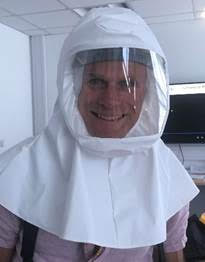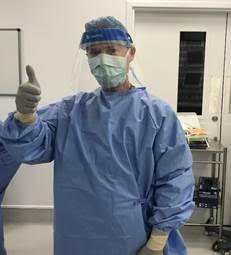Dr Morton’s – the medical helpline
Long before the COVID-19 pandemic brought health in to sharp and panicked focus, we have been monitoring our own health more intensively than ever.
Hundreds of smartphone apps are now available to download to record everything from your menstrual cycle to trying to be alcohol-free for three consecutive days. Wearable tech devices record your heart rate, number of steps, pulse rate, calorie consumption and even your ECG. A sensor can be attached to the back of your arm if you have diabetes and without drawing blood you can have a blood glucose level measurement by passing the reader over the device.
Every day over the past month over 200,000 people a day have rung NHS 111 or used 111 online to report possible COVID symptoms and get advice about symptoms which could be COVID related. Hundreds of doctors have been appointed to ask and assimilate the answers to questions which will decide whether the caller is ill enough to warrant attending the local hospital for further assessment.
The priority has been to conserve hospital beds and particularly intensive care beds for those who need them.
- Stay at home or is it Stay alert?
- Save our NHS
- Save Lives
GP advisors have been working for the NHS 111 call service and all have been instructed to ask the same 7 questions:
- How is your breathing today?
- Are you so breathless that you are unable to speak to me more than a few words?
- Are you breathing harder and faster than usual when doing nothing at all?
- Are you so ill that you’ve stopped doing your usual daily activities?
- Is your breathing faster slower or the same as normal?
- What could you do yesterday that you can’t do today?
- What makes you breathless now that didn’t make you breathless yesterday?

Dr Karen Morton, founder of Dr Morton’s – the medical helpline said:
“Experienced doctors are being asked to behave like an artificial intelligence algorithm rather than using their clinical judgment as this introduces some uniformity to the system. After all, some of the doctors called back into practice have not listened to a chest or diagnosed pneumonia for many a long year.
But actually, COVID-19 is a most peculiar disease. A dry cough and temperature which may not be associated with shortness of breath. Indeed it has been with astonishment that we have seen a pattern of lung injuries which leads to significant inability of the lungs to take oxygen from the air into the blood stream (a low oxygen saturation of the blood, measured as a percentage of haemoglobin fully loaded with oxygen).
Healthy people would saturate their blood with oxygen when breathing air (which contains 22% oxygen) to around 98%. If the saturation falls below 95% there is something wrong. No matter how the person may feel they are coping, their body is not. Every tissue in their body will now be getting less oxygen than it needs and some cells will be injured and die in the process, and the situation will escalate into something worse. It may be that all that is needed is to breathe extra oxygen.”

Dr Ben Marshall, Respiratory Physician and adviser to Dr Morton’s – the medical helpline added:
“Early recognition of deteriorating symptoms by the patient is crucial in speeding up their presentation to hospital emergency services, to ensure appropriate treatment and care is provided. We know that provision of simple measures to severely ill patients such as oxygen and fluids can save lives in COVID-19 infection for which, as yet, there are no known highly effective drug treatments.”

Dr Allister Dow, Consultant Anaesthetist and Pain specialist, and adviser to Dr Morton’s, is working on the front line with COVID emergencies on the wards and in theatres and in the ITU also points out:
“‘When caring for COVID-19 patients, continuous monitoring of blood oxygen saturation / pulse oximetry is vital in order to assess the ability of the lungs to absorb, and the ability of the blood to carry, oxygen. Sadly, critically ill patients who die from COVID -19 usually die because they are unable to absorb enough oxygen from the lungs in order for the vital organs to function. Multi-organ failure ensues. Home monitoring of blood oxygen saturations could play a valuable role in helping to detect deterioration in lung function earlier, allowing earlier presentation to emergency services for life saving treatment.”
So how much better would it be if instead of the seven questions, the doctor asked the following four:
- What is your temperature?
- What is your pulse rate?
- What is your blood pressure?
- What is your oxygen saturation %?
Dr Morton adds:
“Together these are called the ‘observations’ in medical speak, and they speak volumes! These are not expensive nor complicated bits of kit. Our pregnant women monitor their own blood glucose, take their own blood pressure and dip their own urine. Results can even be blue-toothed in so that we (the obstetricians and midwives) can look at our women’s results on a moment by moment basis without the woman having to go to a clinic or hospital. This represents huge savings of time and money, and additional safety as well as reducing the carbon footprint.
People should have a good digital thermometer; a reliable blood pressure machine which will automatically give a pulse rate, and a pulse oximeter which is literally a soft clip, placed over the tip of a finger and gives a readout as a percentage.
This will be a turning point in so many ways and one will be enhanced knowledge about how our body works and an increased wish to be more in control of our health.”
To purchase: https://www.pharmacylink.co.uk/bundle-blood-pressure-monitor-pulse-oximeter-thermometer



